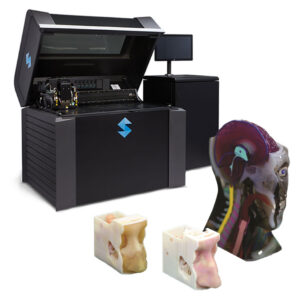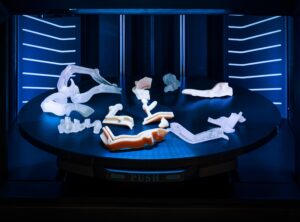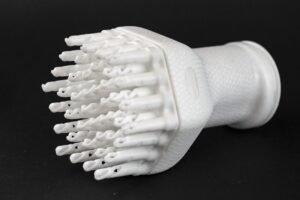In the dynamic landscape of healthcare, the intersection of 3D printing and medical devices is reshaping the industry. Globally, medical 3D print technology is propelling innovation, with medical 3D printing companies leading the charge. This transformative approach encompasses various facets, from the development of cutting-edge medical devices to services provided by medical 3D printing manufacturers.
3D Printing in the Healthcare Sector
Within the medical field, the advent of 3D printing technology has ushered in a new era. The utilization of 3D printing for medical use spans diverse applications, from patient-specific devices to intricate prototypes crucial for research and development. This technological marvel is not only revolutionizing medical device manufacturing but also contributing to the growth of 3D printing in healthcare as a whole. Leading the charge are medical 3D printing companies, leveraging advanced technologies to bring forth innovative solutions. The integration of 3D printers for medical use has become a cornerstone for these companies, ensuring the efficient production of medical devices while adhering to the highest quality standards.
 Image: Stratasys J850 Digital Anatomy printer and 3D printed anatomy model for medical solutions
Image: Stratasys J850 Digital Anatomy printer and 3D printed anatomy model for medical solutions
Advantages of 3D Printing in the Medical Field
The advantages of 3D printing for medical purposes are multifaceted. It facilitates the creation of patient-specific devices, accelerates the research and development process, and provides a cost-effective solution for manufacturing. The best 3D printers for medical applications, such as those from renowned medical 3D printer manufacturers like Stratasys, play a pivotal role in setting industry standards for quality and efficacy.
Medical device sales worldwide exhibit a distinct hierarchy, with the United States spearheading the industry. This supremacy is rooted in the nation’s substantial healthcare expenditure per capita, providing financial strength for robust research and development (R&D) efforts. The U.S. not only pioneers innovative medical technologies but also serves as a pivotal hub for clinical trials, expediting the approval process and setting global benchmarks for quality and efficacy.
Impact of Additive Manufacturing on Medical Device Manufacturing
Additive Manufacturing (AM) emerges as a transformative technology with the potential to address crucial challenges in the medical device manufacturing sector. Three primary factors—speed, cost, and quality—are significantly impacted by the integration of AM processes.
 Development Acceleration & Lower Dependency
Development Acceleration & Lower Dependency
Speed is paramount in medical device manufacturing, particularly for patient-specific devices. AM’s capability to swiftly produce intricate and customized components, coupled with the option to bring AM processes in-house, accelerates development, production, and delivery timelines. This reduction in dependency on external suppliers enhances overall efficiency in the medical device supply chain.
 Lower Production Cost
Lower Production Cost
Cost considerations are pivotal in the medical device industry, where profit margins are sensitive to production expenses. AM introduces cost-saving benefits by minimizing material waste, offering design flexibility, and reducing the reliance on expensive tooling and molds. Bringing AM in-house further aids in cost control and streamlining production processes, contributing to the financial sustainability of medical device manufacturers.
 Quality Medical Equipment for Reliability
Quality Medical Equipment for Reliability
Maintaining stringent quality standards is non-negotiable in the medical industry due to regulatory requirements and the critical need for device reliability. When appropriately controlled and validated, AM processes can meet these rigorous quality standards. Technologies like Stratasys’ machine data APIs play a crucial role in real-time monitoring and evaluation, ensuring repeatability and reliability in the manufacturing process.
The marriage of 3D printing and medical devices is a game-changer in the healthcare sector. The adoption of 3D printing technology in healthcare is not just a technological shift; it is a paradigmatic leap towards personalized and efficient medical solutions. As medical 3D printing companies continue to innovate and push boundaries, the future of healthcare is undeniably intertwined with the limitless possibilities that 3D printing brings to the medical field.
To learn more about R&D Technologies 3D Printers capability, visit our medical industry capabilities page.




